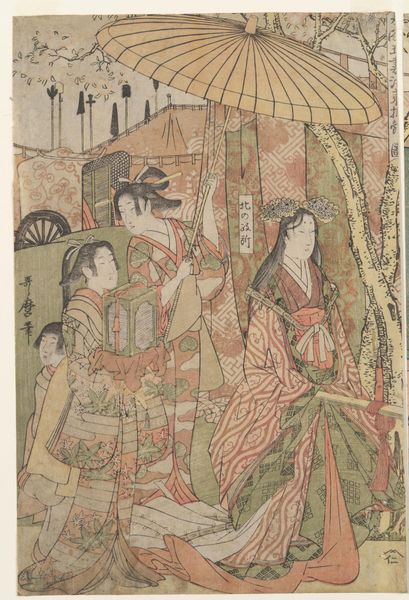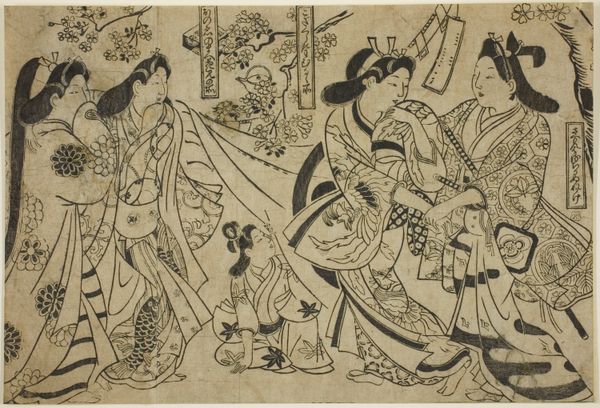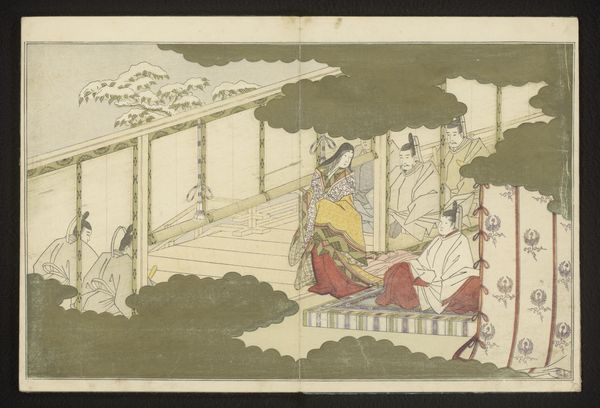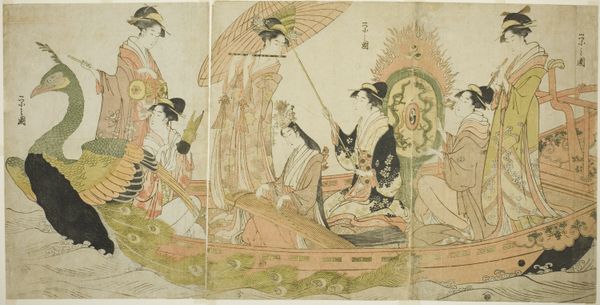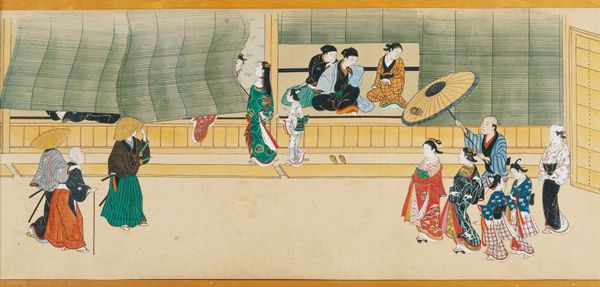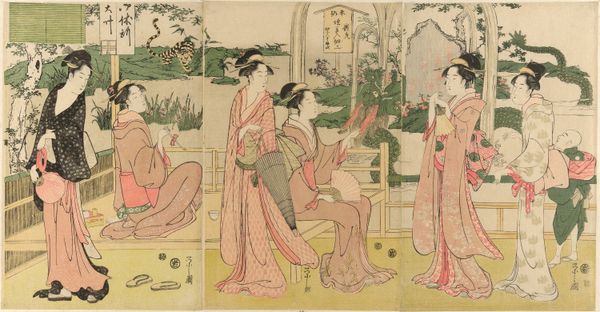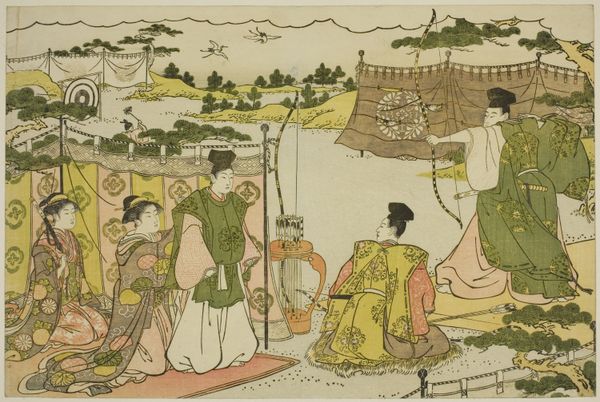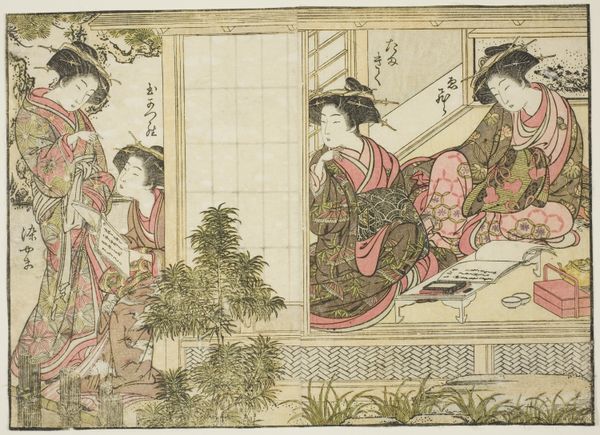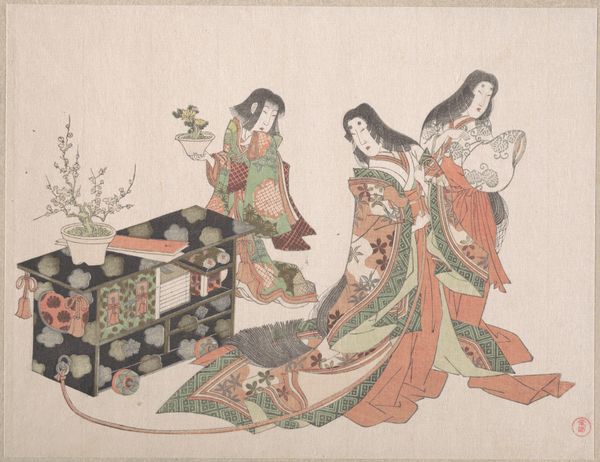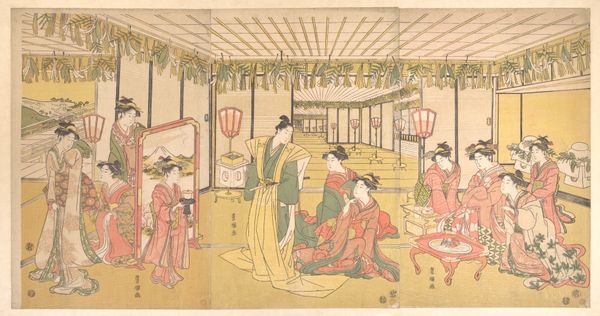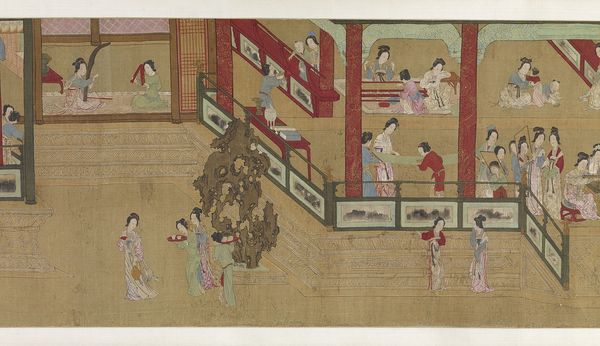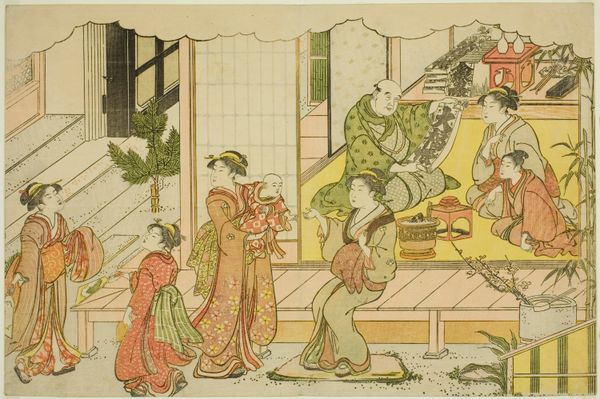
The First Calligraphy of the New Year (Kissho hajime), from the illustrated book "Colors of the Triple Dawn (Saishiki mitsu no asa)" c. 1787
0:00
0:00
print, woodblock-print
#
ink painting
# print
#
asian-art
#
ukiyo-e
#
japan
#
figuration
#
woodblock-print
#
genre-painting
Dimensions: 25.2 × 38.0 cm
Copyright: Public Domain
Editor: This woodblock print, "The First Calligraphy of the New Year," by Torii Kiyonaga, dating back to around 1787, offers such a serene glimpse into what I imagine is a private, almost ritualistic moment. What socio-political insights does this piece offer, given its genre painting categorization? Curator: Precisely, a "genre painting" framing hints at its social commentary. Kiyonaga's Ukiyo-e prints weren't just decorative. They depicted idealized scenes of urban life, subtly shaping perceptions of beauty and leisure within a rigidly structured Edo society. Notice the women. They’re depicted as elegant and refined, engaged in a traditionally scholarly activity: calligraphy. How might that image have played out within the larger social landscape of the time? Editor: Well, if calligraphy was typically reserved for the elite, this piece almost democratizes that activity. Is Kiyonaga perhaps commenting on emerging social mobility, or at least, presenting an aspirational image? Curator: Yes, you're touching on something key! The depiction could be seen as reflecting, or even gently advocating for, shifts in cultural values. The act of creating and publicly circulating such images certainly held its own subtle power, informing, challenging, and solidifying certain cultural values. Think of it in today's context: how does social media both reflect and shape social trends today? Editor: I never thought about Ukiyo-e prints having a sort of... propagandistic effect. Curator: Not necessarily 'propaganda,' but definitely persuasive visual rhetoric, aimed at a growing urban audience with disposable income and aspirations. So, what would you say you’ve taken away from the piece now, viewing it as an element of a public-facing cultural moment? Editor: Definitely seeing beyond just the pretty surface now! It's interesting to consider how artworks like this helped to construct and negotiate social identities and aspirations back in the Edo period. Curator: Exactly, and hopefully, we can carry that understanding with us when we contemplate images today, regardless of their format or context.
Comments
No comments
Be the first to comment and join the conversation on the ultimate creative platform.
